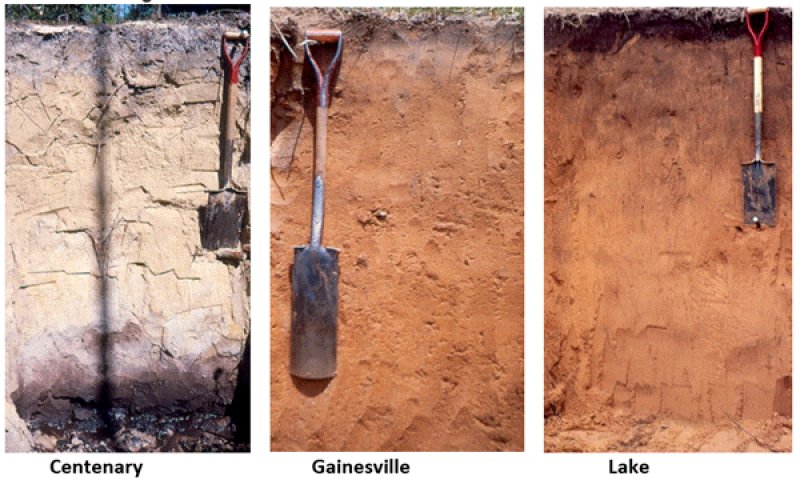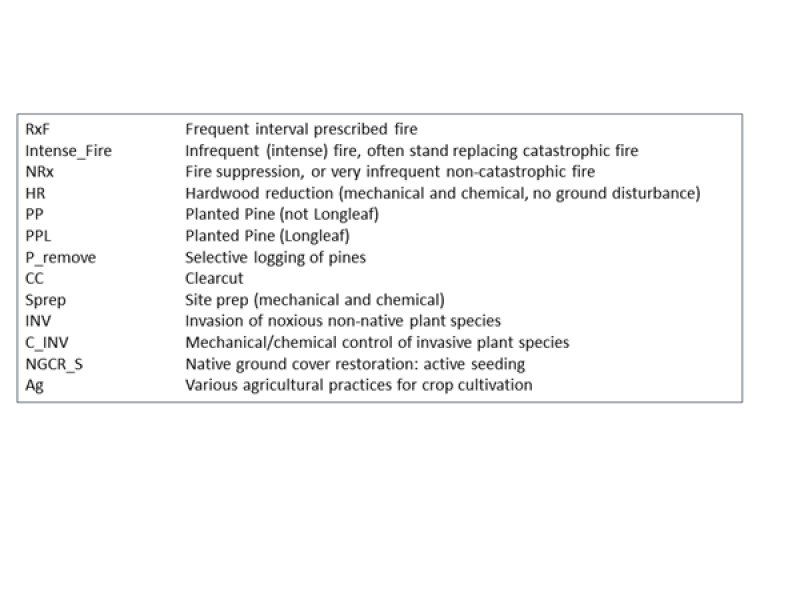
Natural Resources
Conservation Service
Ecological site F154XA003FL
Dry Yellow Sands Pine Woodland
Last updated: 2/21/2024
Accessed: 12/22/2024
General information
Provisional. A provisional ecological site description has undergone quality control and quality assurance review. It contains a working state and transition model and enough information to identify the ecological site.
MLRA notes
Major Land Resource Area (MLRA): 154X–South-Central Florida Ridge
MLRA 154 is entirely in Peninsular Florida, and contains 8,285 square miles. The landscape of MLRA 154 is characterized by a series of parallel, prominent sandy ridges of Pleistocene marine origin, including the Brooksville and Mount Dora Ridges. These North to South oriented parallel ridges are interspersed with more low lying physiographic provinces, including: upland hills, plains, valleys and gaps (Puri and Vernon 1964). The extreme western portion of the MLRA consists of thin belt of coastal lowlands and marshlands.
Many of the soils of MLRA 154 are Pleistocene or Holocene sands that are underlain with older, loamy Pliocene marine sediments (Cypresshead formation) or the clayey Miocene marine sediments (Hawthorne formation). A combination of marine depositional events and the dissolution of underlying limestone (karst geology) is responsible for surficial topography throughout Peninsular Florida.
Classification relationships
All portions of the geographical range of this site falls under the following ecological / land classifications including:
-Environmental Protection Agency’s Level 3 and 4 Ecoregions of Florida: 75 Southern Coastal Plain; 75c Central Florida Ridges and Uplands (Griffith, G. E., Omernik, J. M., & Pierson, S. M., 2013)
-Florida Natural Area Inventory, 2010 Edition: Sandhill (State 1) and Xeric Hammock (State 2)(FNAI, 2010)
Ecological site concept
Dry Yellow Sand Pine Woodlands occur in deep infertile excessively drained sands. These Entisols are yellowish in color and are generally acidic. The site occurs on ridges and shallow slopes (< 8% but can range up to 40%). Distinguishing features of these yellow sands include very deep-water tables, lack of soil profile development, and coarse soil texture. Map unit components are numerous, and predominantly restricted to the Central Florida Ridges and Uplands physiographic provinces, including the Brooksville Ridge, Cotton Plant Ridge, Mount Dora Ridge, Lake Wales Ridge, Ocala Hills, Marion Uplands, and Sumter Uplands units.
This site concept is distinct because of its native condition (i.e., reference site vegetation), component soils, successional patterns, and wildlife habitat. Natural woodland vegetation is adapted to edaphic conditions of deep, droughty, yellow sands with a deep seasonal high water table. Pine woodlands and “sandhills” are dominated by widely spaced longleaf pine (Pinus palustris) and continuous swaths of herbaceous ground cover vegetation consisting of dominant bunch grasses and numerous herbaceous and low woody species.
Associated sites
| R154XX001FL |
Yellow Sands Xeric Uplands These sites are excessively drained communities that occur in similar to slightly higher, drier, more xeric landscape positions |
|---|---|
| F154XX002FL |
Xeric Bicolor Sandy Uplands These sites are excessively drained communities that occur in similar to slightly higher, drier, more xeric landscape positions |
| F154XA004FL |
Moist Sandy Pine-Hardwood Woodlands These sites are somewhat poorly to well drained communities that occur in lower, wetter landscape positions |
| F154XA006FL |
Dry White Sand Scrubs These sites are excessively drained communities that occur in similar to slightly higher, drier, more xeric landscape positions |
| F154XA008FL |
Moist Sandy Scrubby Flatwoods These sites are moderately well to well drained communities that occur in slightly lower, slightly wetter, more mesic landscape positions |
| F154XA009FL |
Moist Basic Pine Uplands These sites are moderately well to well drained communities that occur in slightly lower, slightly wetter, more mesic landscape positions |
| F154XA010FL |
Moist Lithic Flatwoods And Hammocks These sites are somewhat poorly to well drained communities that occur in lower, wetter landscape positions |
Similar sites
| R154XX001FL |
Yellow Sands Xeric Uplands These sites will have a deeper depth to a seasonal high-water table (>80 inches) and greater than 80 inches of yellow sand. These will often have more xeric reference plant communities and different management strategies. |
|---|---|
| F154XX002FL |
Xeric Bicolor Sandy Uplands These sites will have a deeper depth to a seasonal high-water table (>80 inches) and greater than 80 inches of sand with two contrasting colors. These will often have more xeric reference plant communities and different management strategies. |
| F154XA006FL |
Dry White Sand Scrubs These sites will have a similar depth to a seasonal high-water table (80 inches) and greater than 80 inches of white, bleached sand rather than yellow sand. These infertile soils will often have more xeric reference plant communities and different management strategies. |
Table 1. Dominant plant species
| Tree |
(1) Pinus palustris |
|---|---|
| Shrub |
(1) Quercus laevis |
| Herbaceous |
(1) Aristida stricta |
Click on box and path labels to scroll to the respective text.


